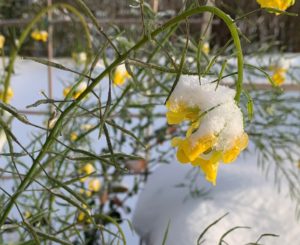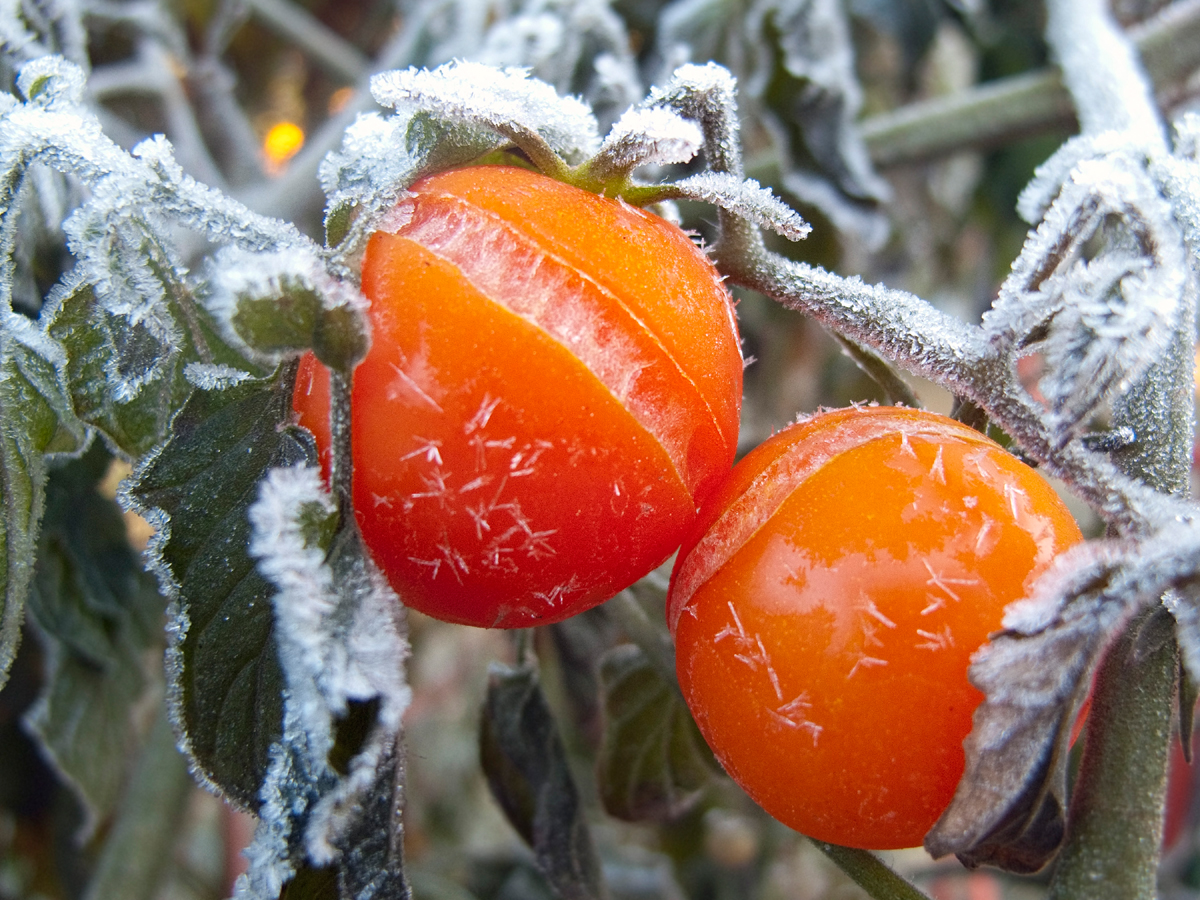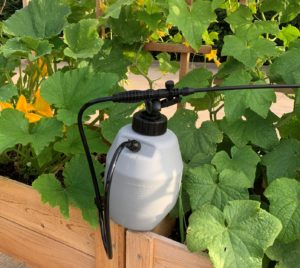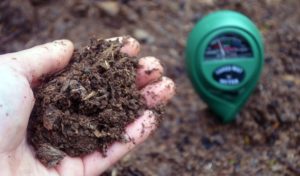The winter season brings change to every garden. Cold temperatures cause some plants to go dormant, while other cold-hardy crops continue to grow. From time to time, the National Weather Service will issue advisories, watches, and warnings for winter weather events like a frost or a freeze. But what is the difference between these conditions, and how do they affect vegetation?
Frost
A frost occurs when the temperature drops to 32°F (0°C). At this point, water vapor in the air condenses and then freezes, causing a thin layer of ice crystals to form. But a frost can occur even if the temperature does not quite reach 32°F (0°C). That is because the temperature is measured between four and six feet (1.2 and 1.8 meters) above the ground. In certain situations, when the ground loses heat and becomes cooler than the temperature of the air above it, ice crystals can form.
This article contains affiliate links. If you make a purchase using one of these links, I will receive a very small commission at no additional cost to you, and it will help me maintain this website. Rest assured, I only recommend products I actually like!

Frosts, which typically do not last long, tend to occur on calm, clear nights or early in the morning when either cloud cover or fog is not available to help retain the earth’s heat. Most plants can survive a short period of frost with little to no damage, but it depends on the plant’s hardiness. Cold-hardy plants like lettuces, broccoli, and Brussels sprouts, usually fair well in these conditions, while more sensitive plants will be damaged unless protected, for example, by a plant cover (this is the one I use).
The U.S. Department of Agriculture has divided the nation into hardiness zones according to the estimated expected dates of the first and last frosts. This is because a frost is the point at which plants that are not suited to cold temperatures will suffer at least some damage. Generally speaking, northern states will experience a frost as early as September or October, whereas southern states will go to November or December before they experience frosty weather. You can find which zone you are located in here, and out the estimated frost dates for your geographic area here.
Freeze
Another winter condition gardeners need to be mindful of is a freeze. A freeze occurs when the surface air temperature drops to a temperature of 32°F (0°C) or below. Freezes are categorized as a light freeze, which is between 32°F and 29°F (0°C and -1.7°C), a moderate freeze, which is between 28°F and 25°F (-2.2°C and -3.9°C), and a severe freeze, which is 24°F (-4.4°C) and below.
A light freeze can kill tender plants, and a moderate freeze will harm most plants, while a severe freeze, also known as a hard freeze or a killing freeze, will heavily damage, if not kill, most plants. It is at this frigid temperature that the ground will freeze solid. The depth of the frozen ground will depend on the duration and severity of the freeze, as well as the type of soil and the amount of moisture present in the soil.[1]

The National Weather Service will issue a freeze warning when there is at least an 80 percent chance that the temperature will reach 32°F (0°C) or below, so that preparations can be made to protect our pets, pipes, and plants.
Winter is, of course, inevitable, but with the right preparations we can plan for and endure even the coldest of days, knowing that the coming spring is just as certain.
Thank you for reading this article! If you found it helpful, please consider sharing it with others via email and social media!
[1] https://www.nrcs.usda.gov/wps/portal/wcc/home/climateSupport/wetlandsClimateTables/growingSeasonDatesLength/



